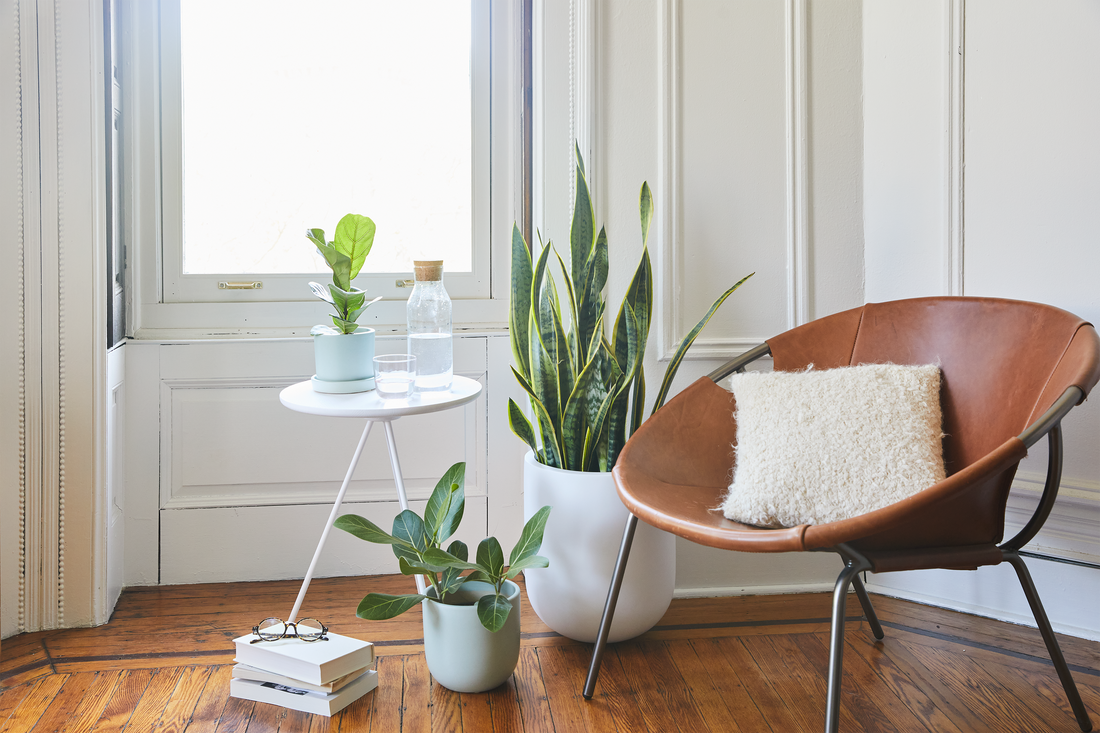
Plants 101
Five Summer Plant Care Tips and Tricks
As the seasons change, so do your plant’s needs. Indoor plants are affected by outdoor changes. In this article, we’re talking about all things summer and what you can do to keep your plants happy as the temperature rises.

As the seasons change, so do your plant’s needs. In this article, we’re talking about all things summer and what you can do to keep your plants happy as the temperature rises.
Finally, Summer
Who doesn’t love summer? Long days, warm nights, a time to take it easy. And our plants love summer, too. For them—summer is the growing season. It is the time of year when the conditions are just right for ample growth. And during this time, adjusting water, light and potentially switching a plant's scenery can help them have the best summer ever, just like you. Read on for our top five summer plant care tips and tricks.
1. Keep plants hydrated
Sound advice for every living thing. In summer, you’ll likely be watering your plants more due to the increase in daylight hours and temperatures. Obvious signs like wilt, leaf curl, or wrinkles—coupled with dry soil or potting mix—means your plant needs more water. If your schedule allows, water plants in the early morning or evening when the sun is least strong to avoid plant burn and water evaporation. If your soil or potting mix is drying out super quick between waterings, you can help it retain moisture by adding rocks or mulch on top of the soil.
If you're going on vacation this summer and need more long term hydration solutions, find our tricks for how to keep your houseplants alive while you're away here.
2. Check sun exposure
The summertime is sunny and hot. If your houseplants are in a spot that gets bright, direct sunlight, you might want to consider drawing a sheer curtain over the window, especially during midday if they can't tolerate it. You can also move your plants a little further away from the window than they were during the winter, towards the center of their room. Keep an eye on potted plants outdoors too! If the sun gets too intense, move them into a shadier spot to prevent sunburn.
Rotate your houseplants once every week or two so each side gets equal sun exposure. This will help them from leaning over. Not sure the light your plant is receiving during the summer is too hot? Place your hand under the light midday. If it is too hot for you, it’s likely too hot for your plant. Desert-dwellers like cacti are an exception to this rule of thumb.
3. Chill on the air conditioner
It’s tempting to want to feel a blast of cool air when we step in from outside, but avoid leaving the A/C on or set the temperature a little higher, especially when you’re not home. Your houseplants will be happier and you’ll save some cash on your energy bill. As a general rule, keep all plants away from A/C units. Succulents prefer it hot and dry, and A/C provides just the opposite. And most other common houseplants come from tropical environments, so the warmer and more humid, the better. You can increase humidity levels by grouping like-plants together, or using a humidifier (yes, even in the summer).
4. Feel free to fertilize
If you did not start to fertilize in the spring, summer is your best chance to fertilize and make it count. It can be important for the long-term health of your plant. Choose a fertilizer with an NPK ratio. N for nitrogen, P for phosphorus, and K for potassium indicate the three most consumed macronutrients plants need. Not sure if your fertilizer contains these ingredients? Check the package for a number that reads something like 10-15-10.
5. Move plants outdoors
It’s hard to stay indoors during the summer. Plants can benefit from time outside, too. If you plan to move your houseplants outside for the summer, you'll want to make sure the move is gradual, and the temperature at night is consistently above 65 degrees Fahrenheit (18 degrees Celsius). Start by placing them in the shadiest place you can find, then gradually move to a spot with some more light, but avoid direct sunlight. A shady spot outside is like the sunniest spot inside, especially in the summer. Learn more about successfully moving your plants outdoors for the summer here.

Words By The Sill
Empowering all people to be plant people—a collection of articles from The Sill's team of plant experts across a variety of plant care topics to inspire confidence in the next generation of plant parents. Welcome to Plant Parenthood™.
Do Some Plant Shopping